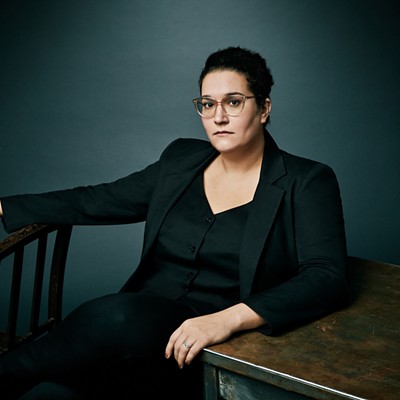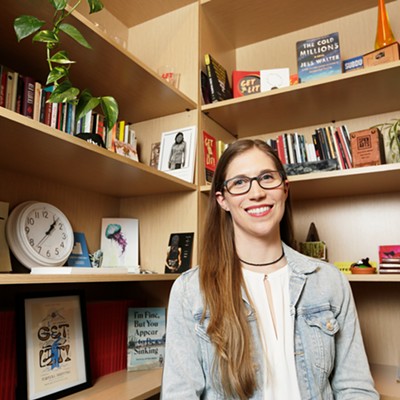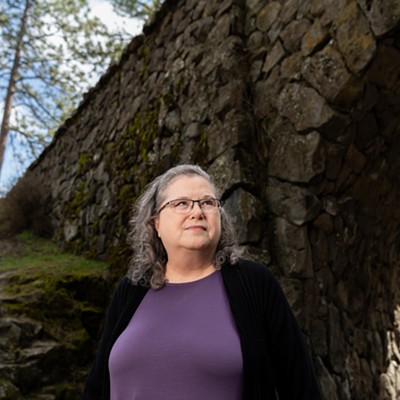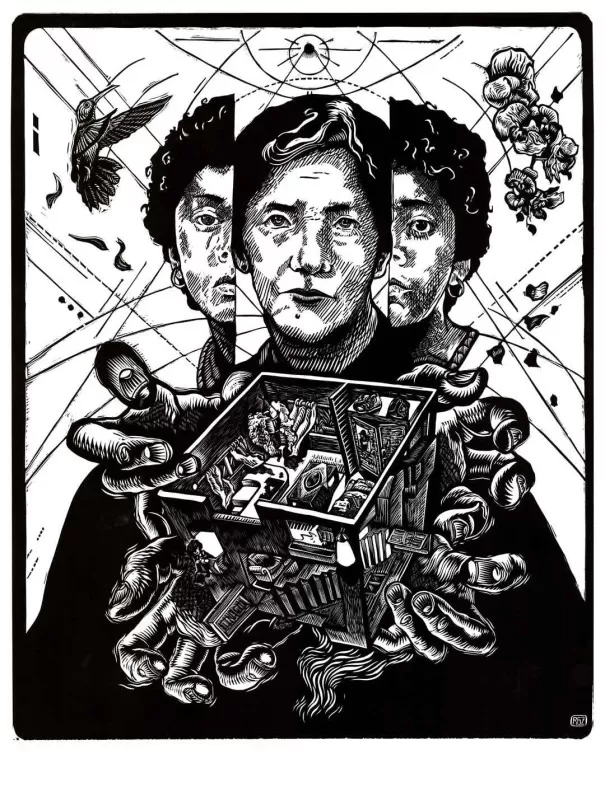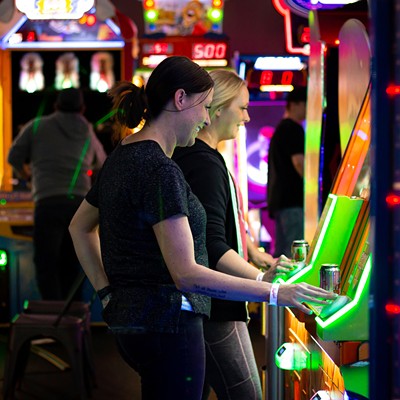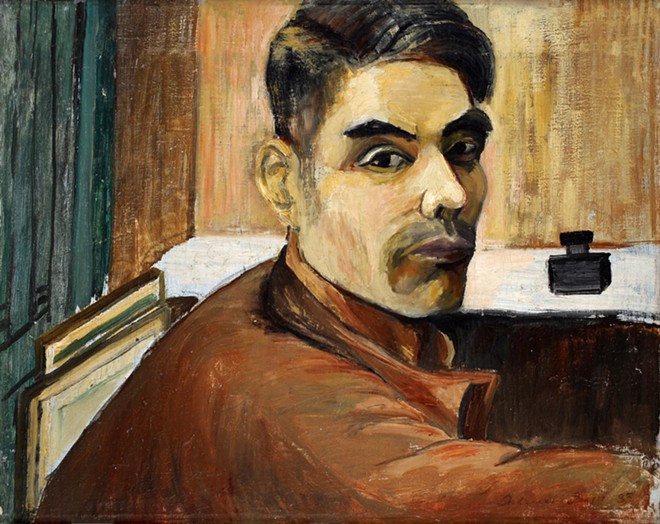
Painted with brushstroke layers of red, orange, yellow and green, and defined with black outlining, Takuichi Fujii’s vibrant watercolor illustrates a confined bus setting. The painting is simple in design, yet profound in emotion, as passengers express a collective sense of exhaustion, fear and uncertainty. The heavy artistry of Fujii’s painting marks a pivotal life event: the beginning of three years of incarceration.
The Northwest Museum of Arts and Culture is now showcasing Witness to Wartime: The Painted Diary of Takuichi Fujii. The new exhibit highlights the illustrated diary of Japanese artist Takuichi Fujii, created during his three years spent in an incarceration camp in southern Idaho.
Witness to Wartime is a traveling exhibit organized by Curatorial Assistance Traveling Exhibitions and originally curated by Barbara Johns, art historian, curator and author of The Hope of Another Spring: Takuichi Fujii, Artist and Wartime Witness.
Fujii details sketches of daily camp routines and activities, and the exhibit displays Fujii’s diary for visitors to observe, and provides a visual slideshow, allowing those viewing to feel as if they are personally flipping through the pages of his thoughts, descriptions and illustrations.
“That’s his vocabulary, his thoughts, his pictures and his sketches, and he was loyal to it,” says Valerie Wahl, MAC collections curator. “It becomes this really unique and touching personal account of what happened and what it was like to be someone in that situation during the uncertainty of the World War.”
Fujii eventually reproduced and developed his memories in over 130 watercolors, painted in natural, earth-toned colors. Fujii’s watercolors capture landscape views, personal experiences and daily life spent in the camp.
Although a majority of the exhibit consists of Fujii's watercolors, Witness to Wartime also features oil paintings completed before his internment, sculptures, and abstract expressionist paintings, a style he had experimented with towards the end of his life and career.
Beyond viewing the diary and Fujii’s entries, Wahl suggested that those viewing with a fast pace or limited time frame should direct their attention towards Fujii’s watercolors. She says that absorbing visual elements of his watercolors alongside each diary-based description is an integral objective of the exhibit.
“I am particularly drawn to some of the landscapes,” Wahl says. “In the diary he talks about feelings of fear and anxiety, and as I look at the images and read his words it is really easy to imagine what it would be like to be in this unfamiliar, but also stark and barren, sign of life. They are really out there in the middle of nowhere, he compared it at one point to being in the Pacific Ocean.”
Original curator Johns says that Fujii’s oil paintings are another important element of Witness to Wartime.
“The few oil paintings from the 1930s give a quick picture, if one wants to go quickly, of what he was doing,” Johns says. “I think those drawings begin to give the characterization of Fujii’s intent, characterization of the drawing, a lot of watercolors then replicate images.”
For those interested in Fujii’s work beyond his years in incarceration, Witness to Wartime displays his experimentation of abstraction, with a series of abstract expressionist paintings where he utilized striking black and white gestures.
An important theme of Witness to Wartime is the relevance Fujii’s diary and artwork holds in America today. On the exhibit wall, a stenciled caption titled “Words Matter” informs viewers of the importance in refraining from descriptions such as “evacuation,” “assembly” and “relocation,” and opting for the word “incarceration,” as it most accurately represents conditions experienced by Fujii and other Japanese Americans.
“These people were Americans, and they were incarcerated based on their race, not anything else,” says Wahl. “In current times it seems like a bit of a cautionary tale to look at history and not want to do things that we regret later, because I think this an embarrassing chapter in American history.”
Witness to Wartime: The Painted Diary of Takuichi Fujii • Through May 16 • Tue-Sun 10 am- 5 pm • Reserve a 50-minute ticket online in advance • northwestmuseum.org/exhibitions/current-exhibitions



